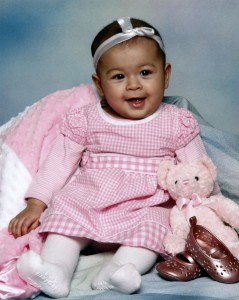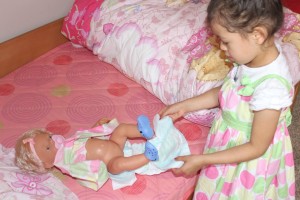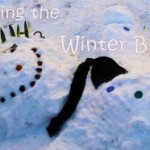
“What feeling is so
nice as a child’s hand in yours? So small, so soft and warm, like a kitten
huddling in the shelter of your clasp.”
Marjorie Holmes –
“The child must know
that he is a miracle, that since the beginning of the world there hasn’t been,
and until the end of the world there will not be, another child like him.”
Pablo Casals –
Children are full of life. They are resilient, curious, sturdy and energetic. Children are our most precious possessions. Children – no matter what their age – want to be appreciated fully in their whole personality including their physical characteristics, the way they feel, their capabilities and fears.
As parents we want to give our children the best possible start in life. Some of the most important decisions we have to make in caring for our children are about health care.
When your child is suffering from a cold, you can choose to give over-the-counter or prescription medications, such as a decongestant or cough medicine, to suppress the symptoms. But cold medicines can cause side effects, and they do little to strengthen the immune system or address the underlying reason for the cold. Some commonly used ingredients in cold
medications can cause restlessness, insomnia, or headaches. And there is nothing in these drugs that can actually cure the cold. In contrast, when a child with a cold is treated with herbs to soothe the respiratory tract and boost the immune system, homeopathy to ease the discomforts and prevent recurrences, and soups and teas to maintain adequate hydration, the
body is supported and strengthened as it works to restore health. It is an important way to work with the body’s ability to heal itself.
Homeopathic medicines allow us to reach the physical and mental/emotional level of a young person. After all, because of intensive testing on healthy humans, each medicine has an exact description of symptoms which it can be used for. This is the only way that extensive healing is possible – by considering not only the single symptom but also the possible causes which have led to it.
In this article, I would like to cover some common childhood concerns for the age group of 0 – 5, with a special focus on
Bedwetting, Diaper Rash and Thrush
Bedwetting
Bedwetting is an embarrassing and difficult problem for a child. His self-esteem may suffer. Sleepovers can be a torture for the child who wets the bed. It is important to understand that bedwetting is not bad behaviour. It is not intentional and it is not your child’s fault.
There are an estimated 5 to 7 million children who wet their beds. Boys are more affected than girls. The typical child who wets the bed has a small or immature bladder. Because he is unable to hold urine through the night, he consistently has “wet” nights. Then there are children who once had bladder control but lost it. This type of bedwetting is likely to be related to
emotional problems such as a new baby in the house, or organic problems, like urinary tract infections or spinal disorders that interfere with sensations and voluntary control of the bladder. Another requirement is the development of neuromuscular control necessary to control voiding. Because this typically occurs at around four to five years of age, it is unreasonable to expect a child younger than this to sleep through the night without wetting the bed. Bedwetting is not considered to constitute an official medical condition
(nocturnal enuresis) when it occurs in children younger than five.
As a child grows and learns control, it is normal to have times when he will sleep peacefully through the night without wetting, and it is equally normal to have periods of regression and bedwetting. Respect your child’s individual growth and development and give him your loving support along the way.
When to Call
the Doctor About Bedwetting
If your child begins wetting the bed
consistently and also displaying symptoms of noticeably increased thirst,
increased frequency and amount of urination, fatigue, increased appetite,
and/or weight loss, see your physician. These can be symptoms of diabetes.
A child who wets the bed and complains of
abdominal pain should be examined by a doctor. This may be a sign of an
underlying infection.
Homeopathic remedies are safe and very effective in helping with bedwetting. There are different remedies available specific to your child’s symptoms. Of course, your child’s constitutional remedy will work best at a holistic level to help with the bedwetting and all other symptoms, so you may choose to have your child’s constitutional case taken by a qualified homeopath. Here are some of the remedy suggestions to help deal with the bedwetting:
Calcarea phophorica
works for the restless child who often voids small amounts during the night and seldom awakens when this happens. This type of child is very difficult to awaken.
Causticum will
help the child who appears weak and pale, with an almost unhealthy facial appearance, usually with dark circles under his eyes. With a child of this type, bedwetting typically lessens during the summer, but worsens in the fall, winter and spring. Causticum often benefits children who wet the bed when they first fall asleep.
Equisetum
helpful for the child who soaks the bed. This child may complain of pain in the lower abdomen. An active dream life, with nightmares that wake him, is common for this child.
General Recommendations
Be positive. Praise and reward dry nights. Never scold a child for wetting the bed. When you feel that your child is ready for and capable of dry nights, try limiting the amount of fluids your child drinks after dinner. Ideally, a child must consume 40 percent of his daily fluid intake in the morning and 40 percent in the afternoon, with the remaining 20 percent in
the evening.
Have your child urinate one hour before bedtime, again half hour before bed, and yet again just before going to bed.
Give your child a liquid calcium and magnesium supplement to help control bladder spasms.
Choose a homeopathic remedy based on your child’s type. If none of the remedies seems exactly right, try a combination remedy, or consult a professional homeopath for a constitutional remedy.
Prevention
Bedwetting is not something you can prevent totally. Time often solves the problem in the end, although the recommendations given above will help. Be sure to understand that bedwetting needs to be treated gently. Punishing or shaming your child is of no help. On the contrary, it often makes the problem even worse.
Eliminate any caffeine-containing products such as cola and chocolate from your child’s diet, as these products are diuretics that promote urination.
Diaper Rash

It is not unusual for babies to develop diaper rashes. A diaper rash is an area of inflamed skin found in the diaper area in infants and young children. It is usually caused by skin irritation from prolonged exposure to heat, urine and feces. Some babies will develop a diaper rash when they begin eating solid food.
Sometimes, a diaper rash can lead to a bacterial or fungal infection. Diapers, whether reusable or disposable, create a hot moist environment that traps diaper contents (e.g., urine and feces) against the skin, which causes irritation and can promote infection.
Most babies will have a diaper rash at some point. Diaper rash should always be treated, and can usually be done so simply from the home. Although the number of severe diaper rash cases have decreased over time, diaper rash is just as common now as it was 30 years ago.
When to call
the Doctor about Diaper Rash
It is possible for diaper rash to become
infected. Watch for signs of increased redness, swelling, tenderness, and
discharge. If you notice any of these symptoms, or if your child develops a
fever, shows irritability, or loses his appetite, call your doctor. These can
all be signs of an infection that may have to be treated with an antibiotic.
Calendula ointment works well for treating a minor diaper rash. It can be used daily to help prevent a rash from developing.
The homeopathic remedy Sulphur is very useful if your baby’s diaper rash is very red, irritated, and sore.
If your child has a persistent diaper rash, then the remedy Thuja works well.
General Recommendations
Air and sunlight are helpful in both preventing and healing a diaper rash. Let your child go without a diaper as much as possible. A child whose bottom is exposed to the air will heal more quickly and will have fewer diaper rashes than a child who is kept closely covered most of the time.
Change your baby as soon as he voids or has a bowel movement.
Put diapers on loosely. Diapers that are too tight don’t allow enough air and may rub and irritate the baby’s waist or thighs.
Gently clean your baby’s skin with each diaper change, using a mild soap, and pat dry. Avoid harsh detergents and vigorous scrubbing, which aggravate diaper rash.
After cleansing, sponge your baby’s diaper area with a mixture of 1 tablespoon of baking soda dissolved in 4 ounces of spring water. The alkalinity of baking soda balances the acidity of urine and stool. Make a new batch of this mixture every two days, and keep it on the changing table.
If your baby’s bottom is red and irritated, apply calendula lotion or ointment.
If the rash is very dry, apply vitamin E oil or evening primrose lotion.
Give your baby homeopathic Thuja or Sulphur.
A home remedy which works really well is oak bark. You simply take 1 – 2 handfuls of the bark (depending on the size of the affected area) and boil it until the water is really brown. Strain it, let it cool and bathe the affected area for about 10 – 20 minutes. Repeat if you need to, but it’s usually not necessary. You can more or less watch the skin heal.
Prevention
Expose your baby’s bottom to fresh air and sunlight whenever possible.
Avoid using wipes that have alcohol or perfume. They may dry out or irritate the skin more.
Use non-irritating, breathable cloth or synthetic fiber diapers, and pin them loosely to allow as much air as possible to reach the skin. Avoid rubber- or plastic-lined diapers. Change your baby at least eight times every day.
Use a mild soap when washing cloth diapers, and rinse the soap out very thoroughly. An extra rinse cycle may be helpful.
Probiotics can help change the balance of yeast in your child’s digestive tract. They can also help change the balance of yeast in mom’s digestive system if breastfeeding.
Prepare a baking soda rinse and use it on your child’s diaper area.
At each diaper change, rub calendula or vitamin E lotion or cream or homeopathic Calendula ointment into your baby’s skin.
Thrush
Thrush, or oral candidiasis, is a common yeast infection that develops in and around the mouth. It is caused by the common fungus called Candida albicans and usually appears as a heavy, whitish coating on the tongue and as creamy patches that resemble milk curds on the mucous membranes of the mouth. The patches may spread to the gums, lips, throat, and skin. In severe cases, thrush may progress to the esophagus, which results in pain and difficulty swallowing.
Although thrush is generally painless, it can cause mouth soreness, especially in babies. Sometimes painful fissures develop on the corners of the mouth, and trying to wipe away the creamy patches may cause small, painful ulcers.
Oral thrush occurs most commonly in newborns, who may pick up the yeast organism during birth or in a hospital nursery. Babies are especially vulnerable because their immune systems are not yet fully developed.
Homeopathic treatment of thrush will focus on internal remedies, backed up by local self- help measures. Practitioners may even prescribe homeopathic doses of Candida itself. Some other possible remedies that work well for thrush include:
Arsenicum album if
the thrush is accompanied by restlessness and/or fatigue.
Sulphur if your
baby has thrush and is generally overheated, or
Thuja in case your
child developed thrush after receiving a vaccination.
General Recommendations
Do not try to scrape or pick off patches of thrush from inside your infant’s mouth. You will hurt your child and leave behind an inflamed, possibly raw and bleeding area.
An acidophilus mouthwash may be helpful. Mix 1/8 teaspoon of an acidophilus supplement in ½ cup of water. Using an eyedropper, squirt the solution on your baby’s gums, tongue, and the insides of the cheeks.
Prevention
Nursing mothers should keep their refined sugar intake to a minimum. Taking ginger tea with meals may also be helpful.
Antibiotics alter the normal flora of the mouth and body, predisposing an infant to thrush by allowing an overgrowth of candida. To maintain the friendly bacteria that help control candida within the body, a nursing mother should eat yogurt regularly or supplement her diet with Bifidobacterium bifidum when taking antibiotics. If a bottlefed infant is taking antibiotics, add bifidus to her formula.
Nursing mothers should avoid having their breasts stay moist for too long by keeping them dry between feedings and allowing them some ‘’air time.’’ If it is necessary to clean them, use water with a tiny bit of hydrogen peroxide added. Bottlefed babies sometimes contract oral thrush as a result of sucking on inadequately cleaned pacifiers or bottle nipples (often the result of dropping them and then putting them back into the mouth), in combination with a fruit-juice-rich diet or following antibiotic treatment for an ear infection. To avoid this, always have an ample supply of clean rubber nipples, pacifiers, and/or teething items on hand, or clean any such item that pops out of your baby’s mouth with hydrogen peroxide and rinse it in water before giving it back to your baby.
Of course, there are other treatments and therapies available apart from the ones mentioned above, but when it comes to treating our children, I definitely prefer using gentle, natural medicine whenever possible. Please call the clinic at (519) 603-0505 to find out how K-W Homeopathic Medicine and Wellness Clinic can help your child. We would be happy to answer your questions.
In health,
Irene Schwens,
C.Tran., DHMHS
Homeopath








